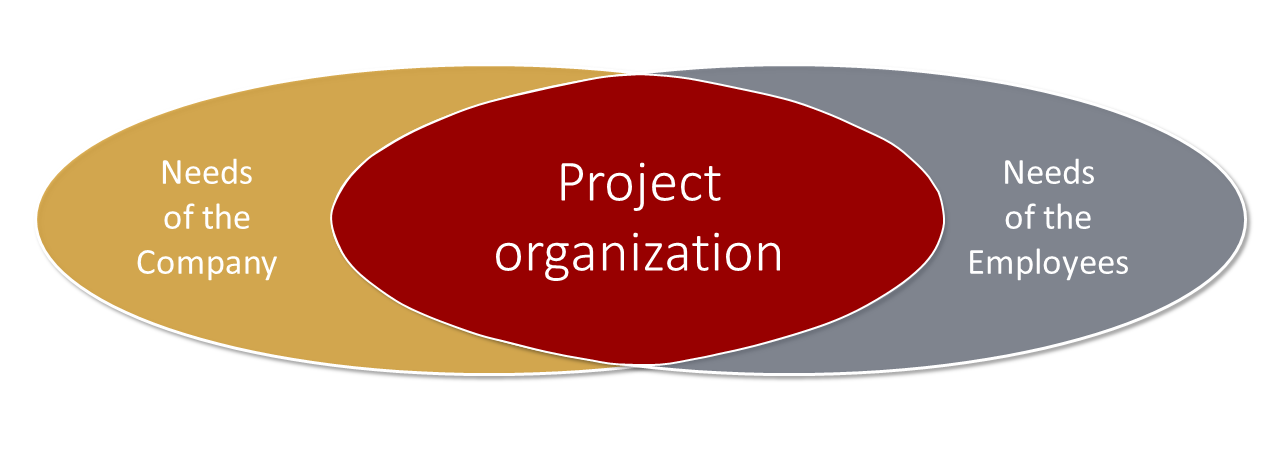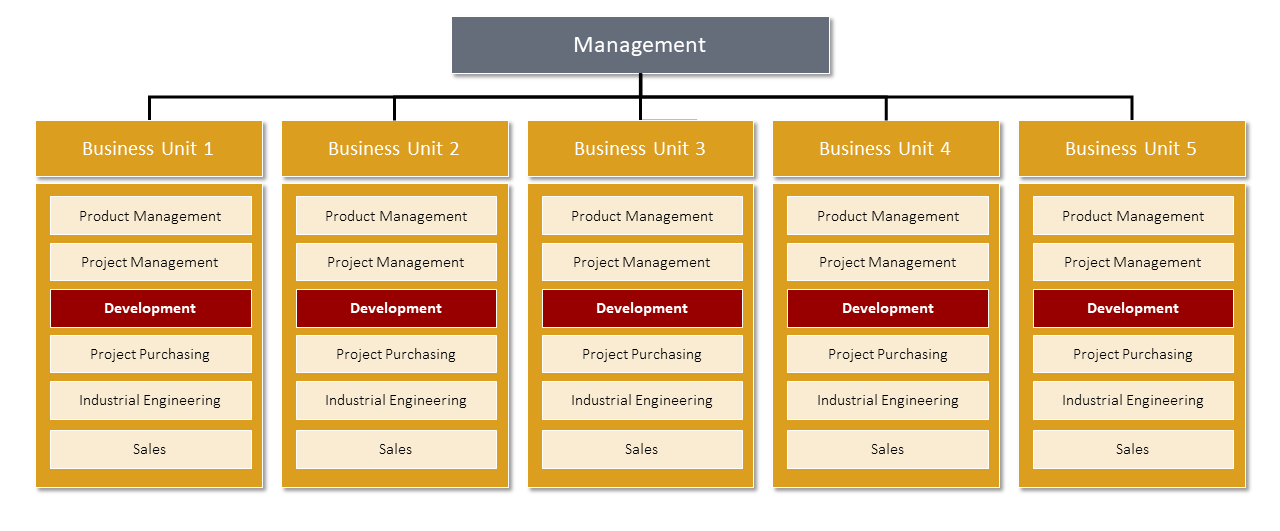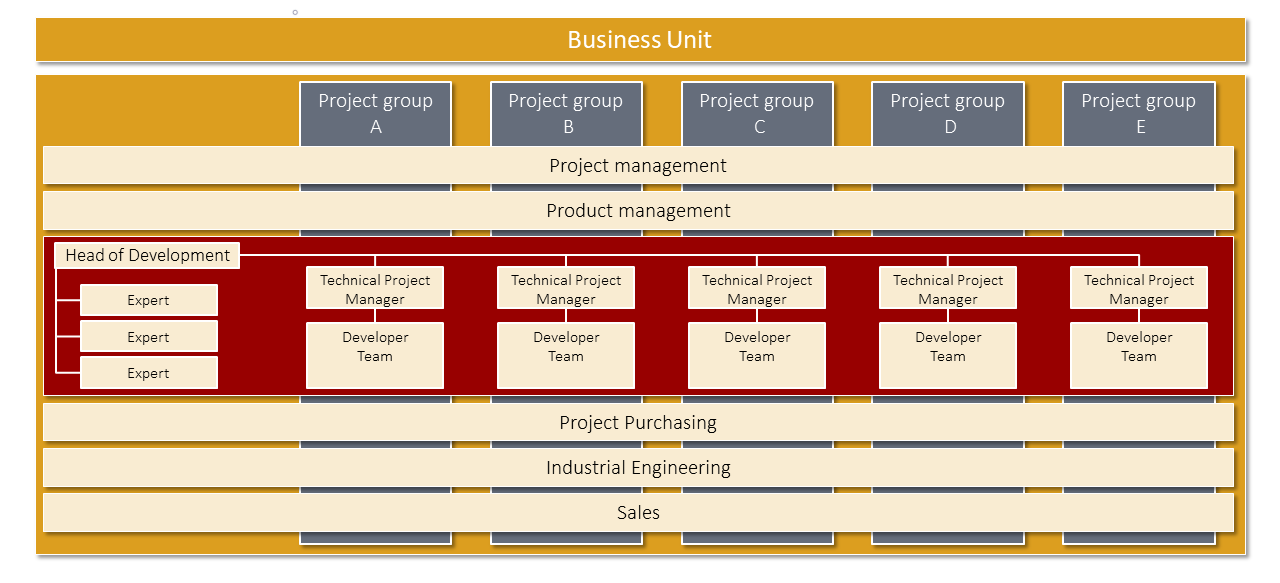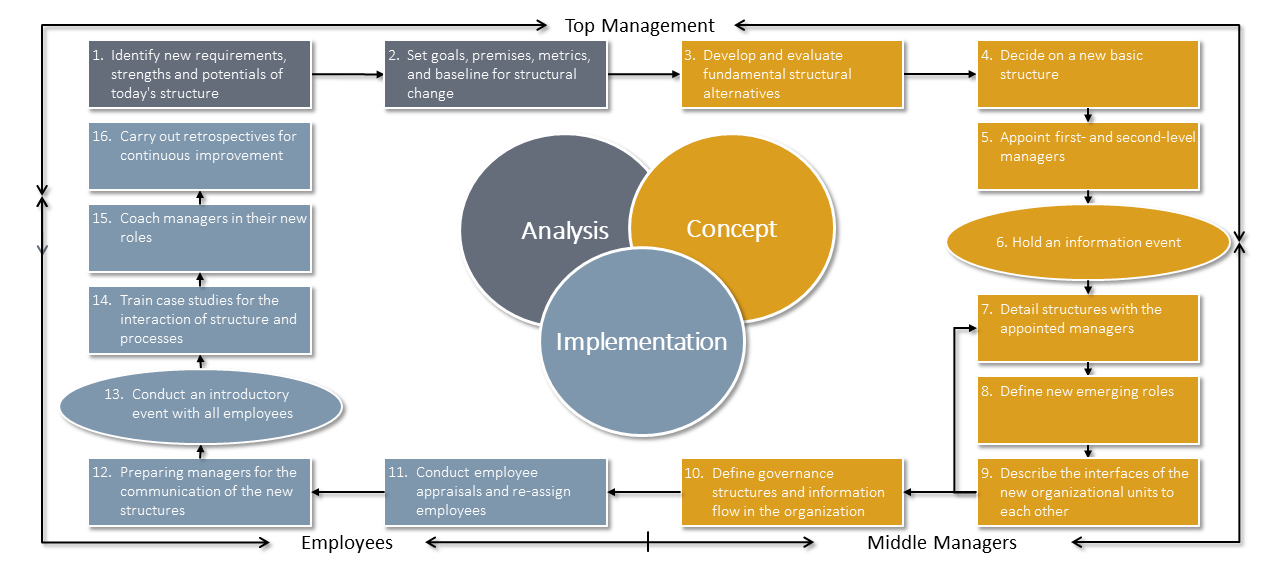High-performance organisation for a high-tech company
For several years now, we have been able to accompany a medium-sized high-tech company as Trusted Advisor in the continuous performance improvement of product development. The starting point was a holistic inventory of all potentials in a Smart Development Assessment. This was followed by the introduction of project portfolio management, an interdisciplinary product development process, professional project management and agile working methods. Now the next booster to increase performance was to be ignited with a redesign of the organisational structure. The company decided on a project organisation. Find out why this decision was made in the following project report.

Motivation
The central question was whether an increase in performance could be achieved by reconciling the needs of the company in terms of more customer orientation, speed and efficiency with the needs of the employees.
From the various basic organisational alternatives, the project organisation quickly crystallised as a target-oriented organisational form. It combines elements of modern agile organisational structures with the classic project implementation that is still desired here.
Needs of the employees
Knowledge workers today are considered to be fundamentally intrinsically motivated. A company can develop this intrinsic motivation by creating the right framework conditions and by managers leading their employees with a Catalyst Leadership Style: The factors mentioned are: Purpose, Autonomy and Mastery. The company additionally elaborated on the factor of simplicity of the organisational structure in the interviews with employees and applicants. "Employees are simply fed up with complex multi-dimensional matrix organisations.
The project organisation
The new organisation was to meet these needs. The project was chosen as the primary structuring feature. Developers almost always work in projects. The resulting basic structure provides for a flat hierarchy with business units and interdisciplinary project teams. The business unit managers thus have all the important specialist functions for sales, the design of the product strategy and the prioritisation and implementation of interdisciplinary projects, including all developers, on board.
With the exception of a few central service functions, the approximately 200 developers were completely assigned to the business units and permanently assigned to project teams within the business units. In addition, experts were introduced to support the project teams as needed.
Reconciling company and employee needs
How does the new organisation fulfil the employees' needs for meaningfulness, autonomy, perfection and simplicity?
Meaningfulness: The permanent assignment to a business unit, in this case an industry, increases the employees' identification with the customers and their requirements. Developers understand much better which challenges and problems their development work solves for the respective customer.
Autonomy: The development teams were put together in such a way that they can implement their tasks largely without the help of other teams. At the same time, a role expectation was developed for the developers that, on the one hand, focuses on their willingness to perform, but on the other hand, places much more emphasis on independent and self-organised work. The experts, who are anchored in the organisation and work across teams, are only to be called in by the employees when they recognizably reach their technical limits.
Perfection: The project teams are permanently anchored in the organisational structure. They therefore stay together, get used to each other, learn from each other and thus automatically continuously increase their efficiency and performance. In addition, care was taken to ensure that employees also harmonise on a personal level.
Proven experts are used to increase innovation performance and professional expertise. There will be exactly one expert for each technical domain. In the future, they will be able to experience appreciation and recognition in a parallel expert career path without disciplinary responsibility for employees. The experts will organise virtual guilds (Communities of Practice) to increase knowledge building and perfection in the subject domains.
Simplicity: In particular, applicants from larger companies had expressed their dissatisfaction with multi-dimensional matrix organisations. Here, the company saw an opportunity to positively differentiate itself and thus increase its attractiveness as an employer. In fact, for the individual developer, the disciplinary and project-related reporting lines will coincide in the future. The technical project manager, who in practice works directly and most intensively with the developer, is now also his/her disciplinary superior with many advantages in performance appraisals, staff development planning, holiday planning, etc. The technical reporting line has been significantly reduced. The professional reporting line has been significantly weakened. In future, professional coordination will take place collegially with the experts and in the self-organised guilds.
Approach
At CO Improve, we have developed and validated a procedure model in 25 years of consulting experience in many organisational projects. In doing so, we rely on intensive change management. We turn those affected into participants and those involved into supporters. In this way, we achieve irreversibly good results that sustainably increase performance.
Conclusion and outlook
With a project organisation, it is possible to harmonise the goals of the company with the needs of the developers and thus create a high-performance organisation. At the same time, a very good starting point is created to convert classic project work to agile working methods in a next step and thus improve the prioritisation of projects and deal more effectively with changing requirements.





